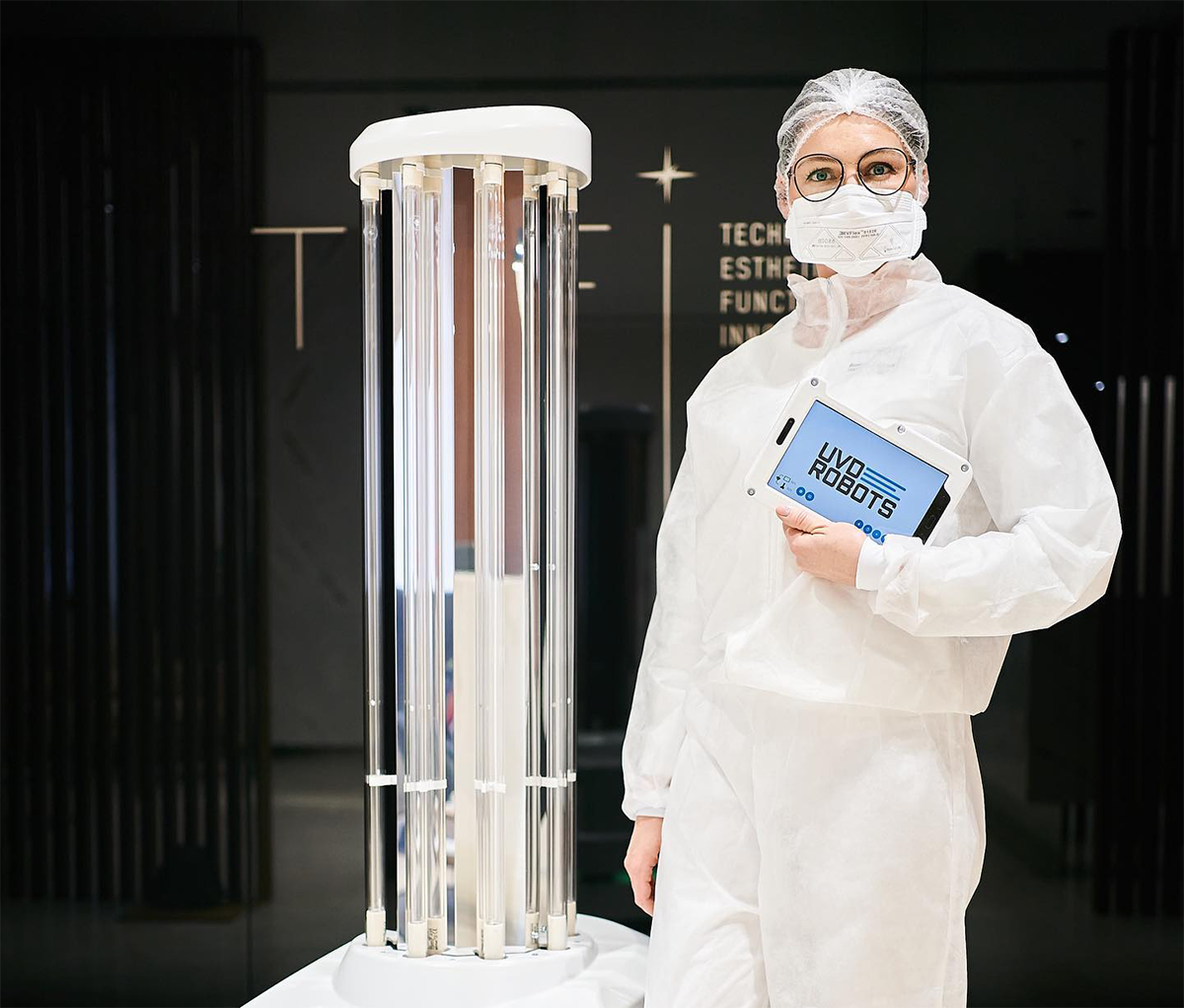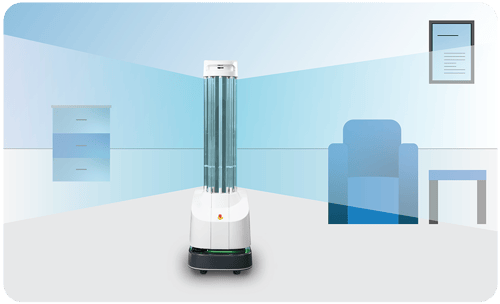Title
Content
Title
Content

Ultraviolet-C (UV-C) light is known for its high rates of efficacy in microorganism reduction.1 But how does its use produce such thorough disinfections? The following is a closer look at the efficacy properties of UV-C light.
UV-C Light and disinfection
Ultraviolet (UV) light is used in environmental disinfection, often as a complement to manual cleaning methods. Ultraviolet germicidal irradiation (UVGI) is the use of UV light for the inactivation of:
254 nm UV-C light has been associated with over 3-log reductions of selected microorganisms.7 This represents an inactivation rate of these organisms of over 99.9%.
Similarly, 254nm UV-C light has displayed an inactivation effect on Escherichia coli and Klebsiella pneumoniae. These studies have revealed over 4-log to over 6-log reductions, representing an inactivation rate of over 99.99% to over 99.9999%. 8 9
UVD Robots for Higher Efficacy
UVD Robots are a series of UV disinfection robots developed by Blue Ocean Robotics, a Danish company that manufactures mobile robots for the service industry.
These robots are mobile and self-driving. They use 254nm UV-C light to inactivate microorganisms, such as:
at over 3-log to over 6-log reductions, or over 99.9% to over 99.9999%.10 11
Summary
Environmental disinfection methods include manual cleaning which can be combined with ultraviolet germicidal irradiation, or UVGI. It is a process that uses UV light - such as 254nm UV-C light - for disinfection.
UVD Robots are self-driving robotic units that utilize 254 nm UV-C light. When used in conjunction with manual cleaning, they can achieve over 6-log reductions of certain microorganisms in indoor environments, representing an efficacy rate of over 99.9999%.
1. Sommer, R., et al. "Comparison of three laboratory devices for UV-inactivation of microorganisms." Water science and technology 31.5-6 (1995): 147-156.
2. Kowalski, Wladyslaw. Ultraviolet germicidal irradiation handbook: UVGI for air and surface disinfection. Springer science & business media, 2010.
3. Nyangaresi, Paul Onkundi, Thusitha Rathnayake, and Sara E. Beck. "Evaluation of disinfection efficacy of single UV-C, and UV-A followed by UV-C LED irradiation on Escherichia coli, B. spizizenii and MS2 bacteriophage, in water." Science of The Total Environment 859 (2023): 160256.
4. Chatzisymeon, Efthalia, et al. "Disinfection of water and wastewater by UV-A and UV-C irradiation: application of real-time PCR method." Photochemical & Photobiological Sciences 10 (2011): 389-395.
5. Chatzisymeon, Efthalia, et al. "Disinfection of water and wastewater by UV-A and UV-C irradiation: application of real-time PCR method." Photochemical & Photobiological Sciences 10 (2011): 389-395.
6. Edwards-Jones, Val. "Assessment of UVD Robot Against Reduction of MultiDrug Resistant Klebsiella pneumoniae, Acinetobacter baumannii and Clostridium difficile on Surfaces." Essential Microbiology Ltd. and Melbec Microbiology Ltd., Apr. 2019, www.melbecmicrobiology.co.uk, www.essentialmicrobiology.com.
7. Giese, Nicole, and Jeannie Darby. "Sensitivity of microorganisms to different wavelengths of UV light: implications on modeling of medium pressure UV systems." Water Research 34.16 (2000): 4007-4013.
8. Andersen, Helle Stendahl. Analysis Report: Test of UV Disinfection Robot acc. NF T72-281. Report Number 754372_Rev. 2. Danish Technological Institute, 2020.
9. Edwards-Jones, Val. "Assessment of UVD Robot Against Reduction of MultiDrug Resistant Klebsiella pneumoniae, Acinetobacter baumannii and Clostridium difficile on Surfaces." Essential Microbiology Ltd. and Melbec Microbiology Ltd., Apr. 2019, www.melbecmicrobiology.co.uk, www.essentialmicrobiology.com.
10. Andersen, Helle Stendahl. Analysis Report: Test of UV Disinfection Robot acc. NF T72-281. Report Number 754372_Rev. 2. Danish Technological Institute, 2020.
11. Edwards-Jones, Val. "Assessment of UVD Robot Against Reduction of MultiDrug Resistant Klebsiella pneumoniae, Acinetobacter baumannii and Clostridium difficile on Surfaces." Essential Microbiology Ltd. and Melbec Microbiology Ltd., Apr. 2019, www.melbecmicrobiology.co.uk, www.essentialmicrobiology.com.